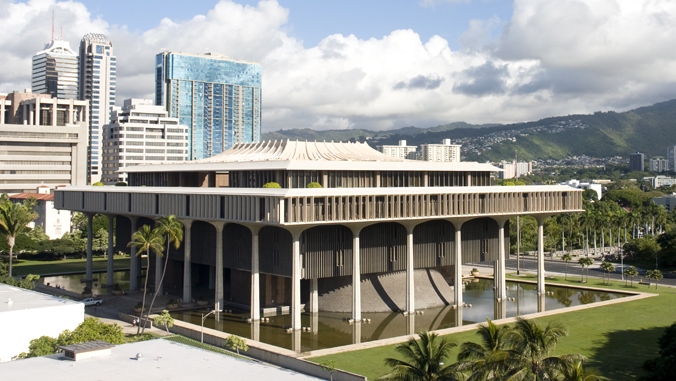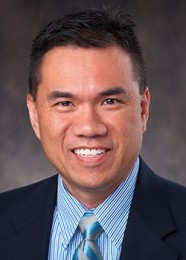
Kalbert Young, UH vice president for budget and finance and chief financial officer, shares his analysis of the 2021 UH budget request to the Legislature.
Update: December 29, 2020: Gov. David Ige has determined that furloughs of state employees are not
necessary this fiscal year and will be delayed until at least July 1, 2021.
Operating budget

On Thursday, November 19, 2020, the University of Hawaiʻi Board of Regents (BOR) approved a biennium operating budget request that was submitted to the governor and, separately, the Legislature. In light of the ongoing COVID-19 pandemic, the economic condition of the state, and the forecasted decline in state revenues, the university’s request did not seek any increase over current appropriation levels. The budget request primarily included transfers between campuses and moving the $4 million general fund subsidy for athletics into the base budget.
The governor considered the university’s request and included it as part of the executive branch’s budget proposal to the Legislature, which was transmitted to the Legislature on December 21, 2020. However, to account for forecasted reduced tax revenues, the governor also included reductions to base operating appropriations for the entire UH System equating to 15% across all campuses. In total, the reductions amount to over $78 million from UH’s $526 million general fund base budget, compared to the current fiscal year.
| Campus | Reduction |
|---|---|
| UH Mānoa | ($35,600,000) |
| JABSOM | ($3,000,000) |
| UH Hilo | ($5,700,000) |
| UH West Oʻahu | ($2,700,000) |
| UH Community Colleges | ($23,000,000) |
| UH Systemwide Support | ($8,478,080) |
| TOTAL | ($78,478,080) |
As presented in the governor’s budget, there are no specific programmatic details for the reductions and the particular impacts. However, the university has already been undertaking systemwide campus conversations with constituencies and stakeholders (students, faculty and staff) for months to formulate different options and scenarios to address program revisions. This process could help inform how the university may have to accommodate funding reductions of this magnitude. The base budget reductions are in addition to the furloughs also proposed by the governor.
The program review being undertaken now may identify some reductions that may have to be permanent in nature. The university began systemwide campus-engaged stakeholder discussions about possible areas of budget and program impacts. For many campuses, the process began in late-July and is still ongoing. Administration is committed to the university’s deliberative process to take on the very difficult challenge of finding opportunities for reform, efficiencies and/or reductions, as necessary.
Capital Improvement Program (CIP) budget
The capital improvement program (CIP) budget request was also approved at the November 19, 2020, BOR meeting. For the upcoming biennium, the CIP budget request is also modest. The bulk of the CIP plan is intended to allow UH to continue to address health and safety measures, increase efficiency and utilization of existing spaces and support current and funded research activities.
The university is requesting $288 million for FY22 and $232.5 million for FY23 to address capital renewal, progress on deferred maintenance and funding for projects to modernize each of the campuses within the UH System. The governor included $165 million in FY22 and $150 million in FY23 in his budget request. The following table lists the projects from the board-approved budget and the amounts that were included in the governor’s request:
| Campus | Project Title | BOR FY22 | BOR FY23 | Gov FY22 | Gov FY23 |
|---|---|---|---|---|---|
| UH Systemwide | Renew, Improve and Modernize | $110,500,000 | $110,500,000 | $48,500,000 | $80,000,000 |
| UH Community Colleges | Capital Renewal and Deferred Maintenance | $25,000,000 | $25,000,000 | $15,000,000 | $25,000,000 |
| UH Community Colleges | Minor CIP | $25,000,000 | $25,000,000 | $15,000,000 | $21,000,000 |
| UH Hilo | Renew, Improve and Modernize | $24,000,000 | $13,500,000 | $10,000,000 | $15,000,000 |
| UH Mānoa | UH Mānoa Mini Master Plan Phase 2 | $60,000,000 | $60,000,000 | ||
| UH Community Colleges | Honolulu CC Technology Renovations | $15,000,000 | $15,000,000 | ||
| Aquaria | Waikīkī Aquarium | $1,500,000 | $9,000,000 | $1,500,000 | $9,000,000 |
| UH Community Colleges | ADA Upgrades | $14,000,000 | $14,000,000 | ||
| UH West Oʻahu | Renew, Improve and Modernize | $3,000,000 | $3,000,000 | ||
| UH Community Colleges | Windward CC Agripharmatech Bioprocessing Facility | $3,000,000 | |||
| UH Mānoa | Central Admin Facility with Parking | $4,000,000 | |||
| UH West Oʻahu | Planning Projects | $500,000 | $500,000 | ||
| UH Community Colleges | Kapiolani CC–Kokiʻo | $2,500,000 | $30,000,000 | ||
| UH Community Colleges | UH Maui College Vocational Tech | $2,000,000 | |||
| TOTAL | $288,000,000 | $232,500,000 | $165,000,000 | $150,000,000 |
Legislative package
Due to the shortened 2020 legislative session and the effects of COVID-19, the university was unable to have its legislative package move through last session. UH will be re-introducing some of the proposals from previous years, which include two measures that would help diversify the state’s economy and advance the university’s ability to encourage technology transfer and commercialization of university intellectual properties. These could help to mitigate our state’s reliance on the tourism industry by spurring increased entrepreneurship in other sectors. The intent of the measures was to remove “sunset provisions” that limit the duration of UH’s express statutory authority for its faculty and staff to engage in various programs and activities to support the innovation and commercialization of UH-based technologies.
The governor’s executive branch budget request, along with all the other measures will be deliberated by the Legislature, which convenes on Wednesday, January 20, 2021. This biennium budget will be for the upcoming two fiscal years that run from July 1, 2021 through June 30, 2023.
As in years past, I hope to provide readers updates throughout the legislative session to show the progression of the budget for our university as it moves through the process. Given the continued lingering effects attributable to COVID-19 for our state and economy, I am expecting that the legislative attention will be most focused on fiscal aspects and budgetary matters. Broader and farther-reaching legislation are surely to have the elevated lens of ensuring a balanced state budget. The governor’s proposed budget reductions are but one option to address the state’s fiscal shortfall. Other ideas being discussed ahead of opening the legislative session include: measures to “sweep” non-general funds, which could include funds of the university, such as the Tuition and Fees Special Fund; increasing taxes or tax rates; suspension of tax credits; and other means of revenue generation in addition to expenditure reductions.
Let’s see what 2021 has in store.

